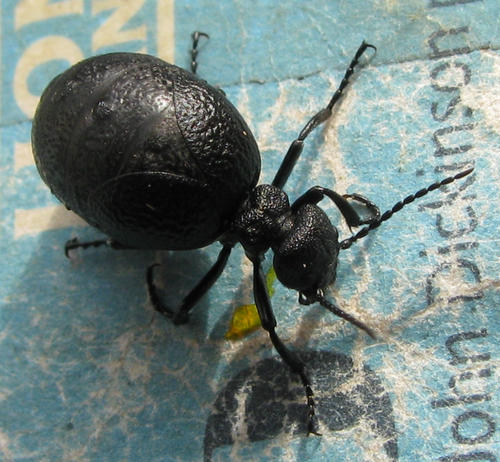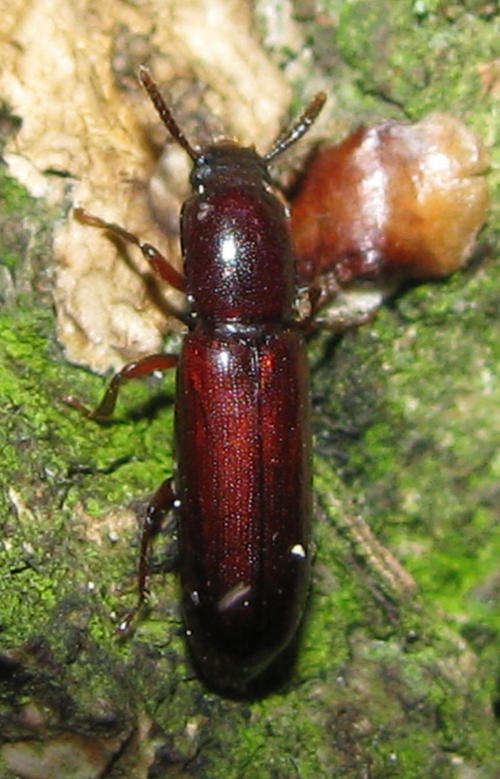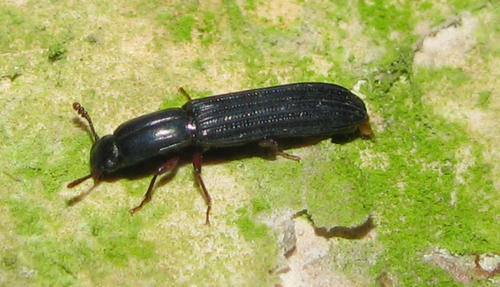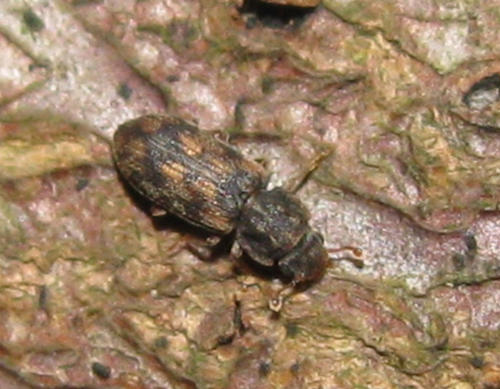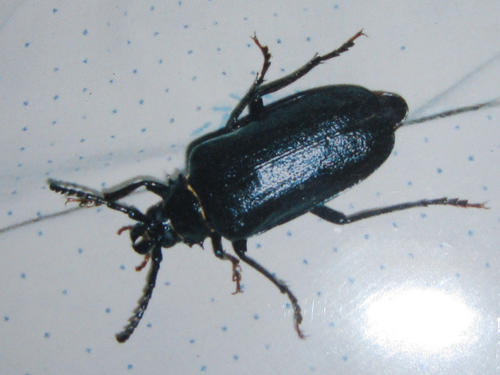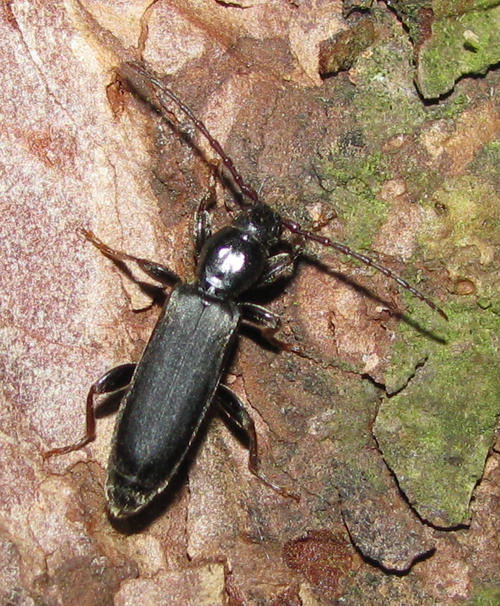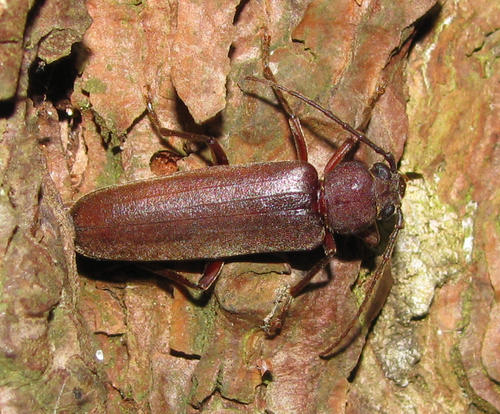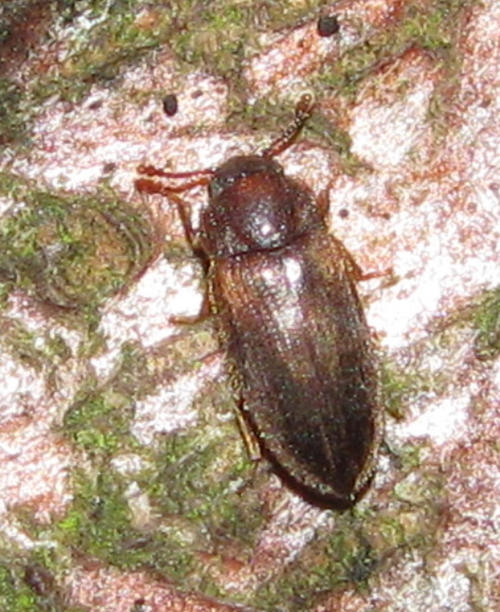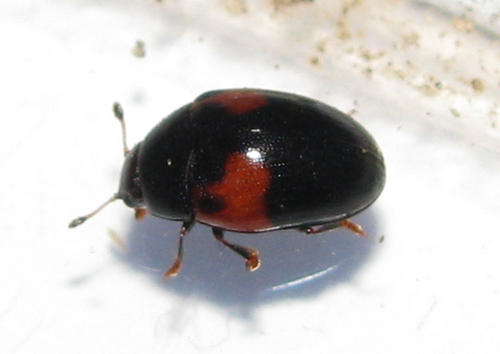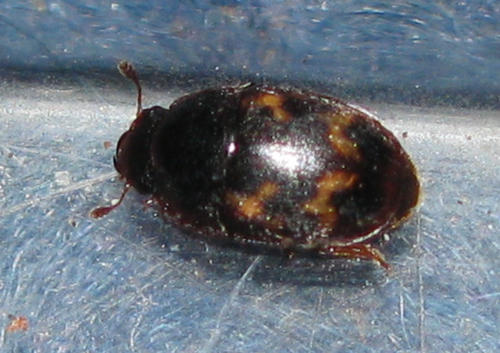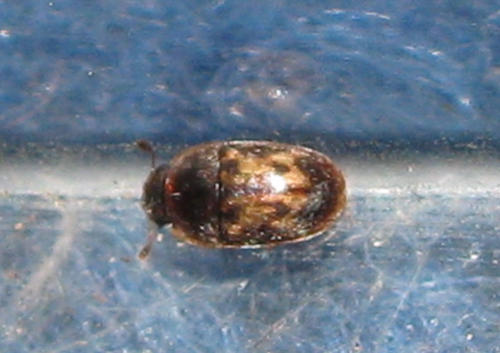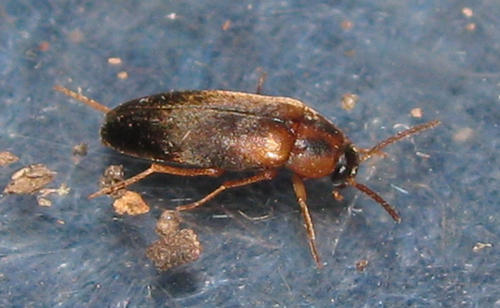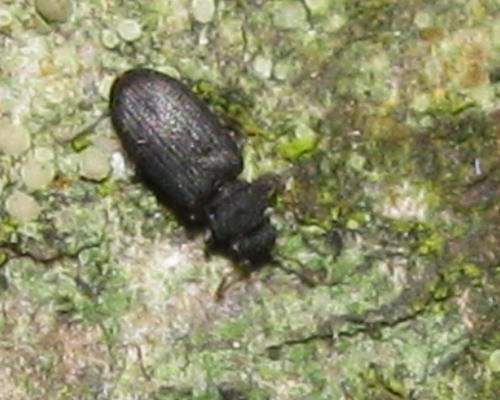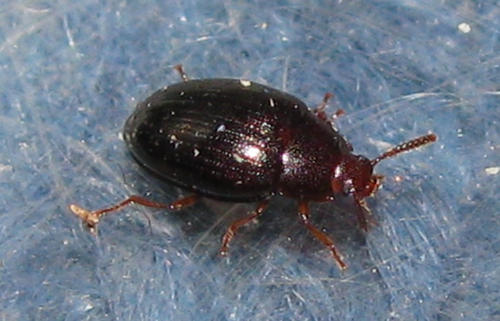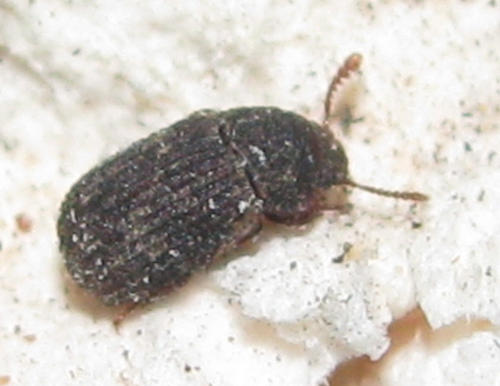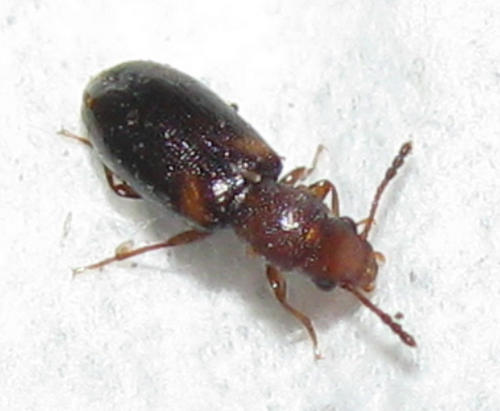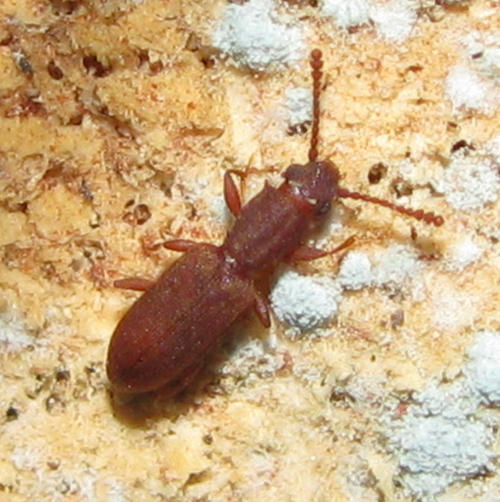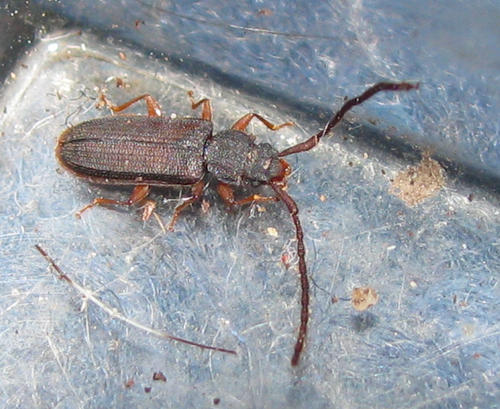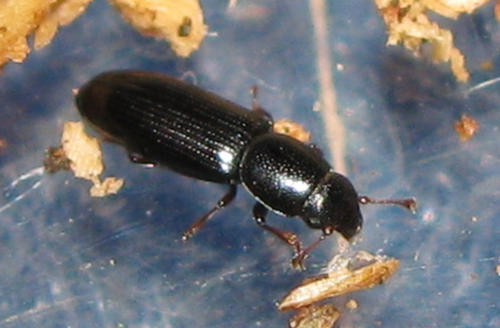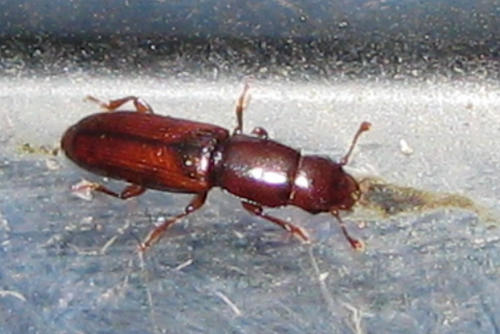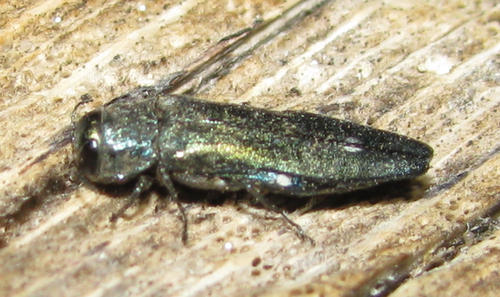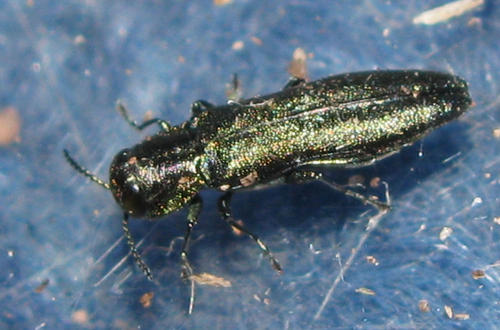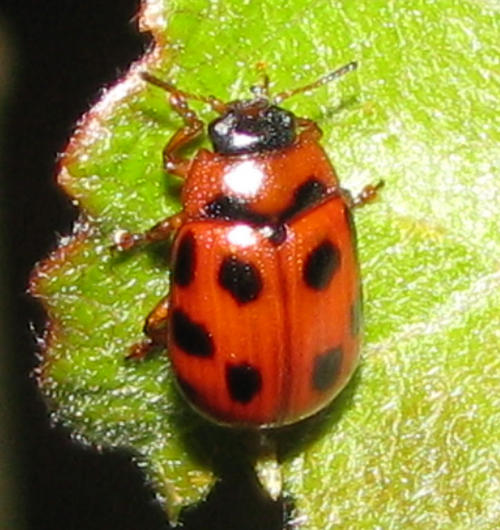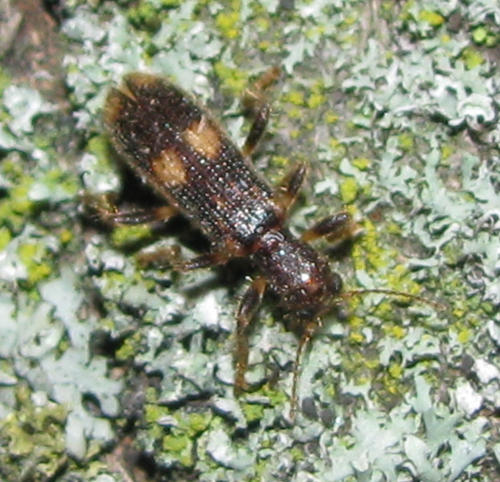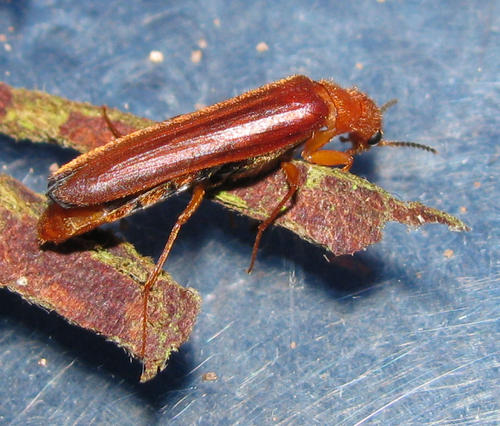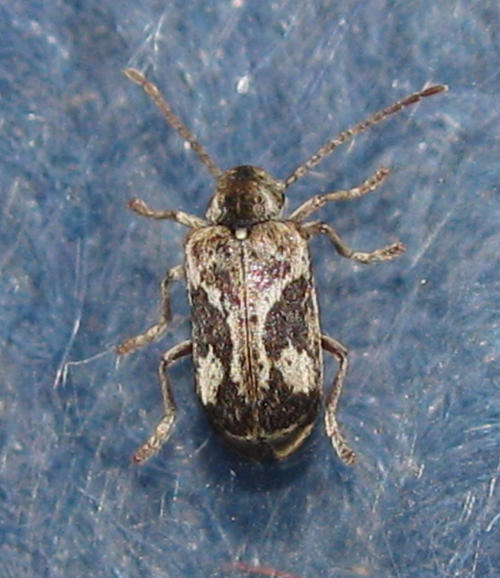Notable Coleoptera found in the Kidderminster area 2008-2011
Alan Brown
While night-hunting for Carabidae for the past two years, it hadn’t escaped my notice that there were a lot of other Coleoptera species active at night. I had already stumbled across two important Red Data Book (RDB) species by accident during my Carabid survey, so at the beginning of 2011 I began to look for other species full time.
However, no technique is without flaws. Many species of Cerambycidae, Elateridae, Buprestidae, Cryptocephalus, and others are all diurnal, so my chances of coming across these were pretty slim, but I was nonetheless still optimistic. Kidderminster has some unusual habitats: heathland, wet woodland, marsh and open parkland, with the River Severn and Wyre Forest in close proximity, so I figured my prospects of finding some important species were excellent. This year (2011) the weather was also good: night time temperatures were above average and the dry spells were long, especially during the Spring.
Having covered a lot of ground during my Carabid survey I also knew certain areas where there were plenty of dead wood, stumps, log piles, sap-runs, fungi, moulds and tree species. Memorising where I had come across beetle galleries in decaying wood was also to prove rewarding for tracking down some unusual predatory species. The rest was down to some hard foot slogging and my own enthusiasm. The vast majority of species recorded at night were found on the surface of the bark and therefore bark-stripping was unnecessary except for one species, Uleiota planata, which hardly ever seems to surface. Pit fall traps and beating techniques were not used. A good headband torch can usually pick out the smallest beetles if they are visible. My notable finds are listed below, with pictures for most, but there were many more that are not covered in this article.
Meloe rugosus (Meloidae: RDB3):27.9.2009.
I stumbled across this species while looking for Carabids at night on a heathland site. Then on 25.10.09 I found two large gravid females. In 2010 I found three more on 21st September. This species is surprisingly active at night and quite sensitive to torch light. One of its host bees, Adrena haemorrhoa has been recorded at the same site. There is some speculation at the moment as to whether this species is increasing its range, but I think perhaps this beetle may have been overlooked for a long time. A nocturnal species, appearing late in the year in very low numbers could have been missed. Identification confirmed by Paul Whitehead.
Corticeus unicolor (Tenebrionidae: RDB3): 4.9.2010.
A darkling beetle. This is an important find as it is the first modern record outside of its Nottinghamshire stronghold. I have found two sites for it, one at Kidderminster and one at Stourport, the habitat being identical in both cases. Found in shady woodland on dead standing birch trees associated with bracket fungus. They are visible on the bark at night and there are two colour forms. The first form is an all orange colour and the second form has a dark head and pronotum with a chestnut coloured elytra. I have been monitoring them from April to October, and they seem to be more common in September when they can be seen in small clusters. They apparently feed on the mycelium of the bracket fungus and are adept at boring holes in the wood. Being nocturnal they are very sensitive to light. The secret to their success at the Kidderminster site seems to be a high rate of birch die-off in the coniferous section of the wood. Their future at the Stourport site is far more precarious as it is in purely deciduous woodland with the only dead standing Birch being the one the beetles currently occupy.
Colydium elongatum (Colydiidae: RDB3): 10.05.2011.
Mostly restricted to the extreme south of the country this record is the most northerly site for this species. Due to its apparent reluctance to come out of hiding, this was by far the most difficult species to find. Thought to be a predatory species, I’ve only found it at one site so far, in woodland on a dead standing Birch tree infested with two weevil species, Xyloterus lineatus and Xyloterus domesticus. Very occasionally, at night it appears fleetingly on the bark for a few seconds before disappearing into another bore hole or tree fissure. Interestingly Corticeus unicolor beetles have moved in recently in the last couple of weeks, even though there is no evidence of bracket funghi on this tree, so perhaps providing another food source for Colydium. I’ve seen two separate individuals of this species in May and June, and although elusive, it is well worth the wait to see as it is the most elongate species I have yet seen.
Synchita undata (Colydiidae:RDB1): 15.05.2011
I found the first two specimens at night on a Sycamore stump in woodland alongside the Devil’s Spittleful Nature Reserve (NR) but I have found no more there since. A nocturnal species, this one also has a specific habitat namely decaying Sycamore trees with black wood mould. In 1982 this species was only found at one site, Windsor Forest in Berkshire, but since then it seems to be extending its range. On the 30th June I found a small colony at another woodland site, this time on a decaying bough of Sycamore with the black wood mould present and counted twelve beetles there altogether. Nearby, on some recently cut Sycamore logs I found four more investigating the bark, which were in the first stages of decay. A small species, only about 3.5mm long, they are very active beetles but when still they blend in well with the background showing a rather flattened appearance. Identification confirmed by Paul Whitehead.
Prionus coriarius (Cerambycidae: Na):24.07.2008
Otherwise known as the Sawyer or Tanner beetle, this is our largest Longhorn species. I’ve only seen this one on two occasions, once when I saw one fly across a woodland clearing, and the second when I was lucky enough to see exiting a decaying Oak tree. Both sightings were made at night in woodlands alongside the Devil’s Spittleful NR. The largest measured 45mm in length. A rarely seen species, this one is reputed to be attracted to moth lights occasionally.
Tetropium gabrieli (Cerambycidae: local):26.06.2010.
The Larch Longhorn. Another nocturnal species. I have found a small colony of these at Chaddersley wood on a pile of Larch logs. It has also been recorded at the Wyre Forest. This species can be heavily parasitized by ichneuman wasps. The size of the beetle varies from 8mm to 18mm and they begin to appear in late April through till late July.
Arhopalus rusticus (Cerambycidae: local):26.06.2010.
The Dusky Longhorn. This species is well established around Kidderminster and found just about anywhere where there are pine trees but as it is nocturnal it is also rarely seen. This one was recorded at Chaddersley wood, but I have also seen it at the Devil’s Spittleful NR and Trimpley reservoir. It lives on living as well as decaying trees and size varies from 10mm to 30mm. I normally see the first ones in late June until early September.
Diplocoelus fagi (Biphyllidae: Nb): 29.04.2011
Another species doing well around Kidderminster. I found them at just about every woodland site, but especially in beech woodland. Mainly linked to black wood mould in beech I also found smaller numbers on decaying Sycamore logs, birch and sometimes on conifer stumps.
Tritoma bipustulata (Erotylidae: Na):18.04.2011.
A fungus beetle. I found these in woodland at one site, the Devil’s Spittleful NR. A nocturnal species. I found four on decaying Birch with bracket fungus and only saw them in April. Somewhat similar to a small ladybird in appearance.
Cryptarcha strigata (Nitidulidae: Nb): 18.04.2011.
A sap beetle. I found a number of these on open heathland, on freshly cut Birch stumps oozing sap and also on nearby Oak sap runs. A small beetle, mainly nocturnal, this species can often immerse itself in sap without getting stuck.
Cryptarcha undata (Nitidulidae: Nb): 14.05.2011.
A sap beetle. This one is much scarcer than strigata and smaller, only 2 mm long. I have only seen one to date, at night on a freshly cut Birch stump oozing sap. It seemed to be quite happy living in a fissure with a group of Soronia grisea and is a very active beetle.
Hallomenus binotatus (Melandryidae: Nb) :14.05.2011
A false darkling beetle. I’ve only come across these at one place, in a patch of shady woodland on a damp, mouldy Birch log with plenty of fungus. Only seen on a few occasions and they can be fast movers.
Enicmus brevicornis (Latridiidae: Nb):28.06.2011.
A small scavenger beetle, this species also seems to like decaying Sycamore logs with black wood mould. Sometimes I found these in large numbers at night and also a few on decaying Beech logs.
Scaphidema metallicum (Tenebrionidae: Nb) :18.06.2011.
A darkling beetle. I would occasionally find these on decaying oak stumps and once also on a decaying beech bough.
Eledona agricola (Tenebrionidae: Nb):30.06.2011.
A fungus beetle. I found these attached to a very large Chicken-of-the-woods fungus on the trunk of a Viburnum tree alongside a busy road. They appear on the surface occasionally, and resemble a bark beetle rather than a fungus beetle.
Lissodema denticolle (Salpingidae: Nb):12.07.2011.
I found four of these narrow-waisted bark beetles at night on a rotting chestnut bough in woodlands.
Silvanus bidentatus (Silvanidae: local) :16.07.2011.
I found these in Eyemore wood at night where a small number were busy searching the nooks and crannies on a large pile of pine logs. A predatory species that feed on various bark beetle larvae, this species is small, about 4mm long. Identification confirmed by Paul Whitehead.
Uleiota planata (Silvanidae: Na ):29.07.2011.
This species has to be looked for under the bark. I found three underneath the bark of a decaying beech tree at Springfield Park. Rather flat and small, about 5mm long, I have also found this predatory species underneath willow bark.
Rhizophagus picipes (Monotomidae: Na):10.05.2011.
A rare predatory species, I found this one at night on a fallen Pine log infested with bark beetle larvae.
Rhizophagus depressus (Monotomidae:local) :29.04.2011.
A more widespread species, introduced to help combat the problem of bark beetles, this species is usually always found on pine and is very small, 2.5 to 3.5 mm long. An active nocturnal predatory species.
Agrilus pannonicus (Buprestidae: Na) :21.05.2011.
Sometimes I bump into diurnal species like this jewel beetle. I found this one inactive at night on a recently cut oak stump at the Devil’s Spittleful NR.
Agrilus laticornis (Buprestidae: Nb):19.05.2011.
Another diurnal species, I found this one taking cover under a Sycamore bough during the rainy spell at night. Found at Springfield Park.
Gonioctena decemnotata (Chrysomelidae: local) :15.05.2011.
Recently delisted from Nb status, this leaf beetle is still rare in Worcestershire. Last recorded in 1982, I found four of these on Aspen, its only known food plant, at the Devil’s Spittleful NR. This species seems to prefer young saplings to mature trees.
Polydrusus splendidus (Circulionidae:Na):22.04.2011.
A small, metallic green weevil associated with various trees including apple and oak, I found this one active at night crossing a pathway on the Devil’s Spittleful NR. This species seems to be increasing its range. Identification confirmed by Paul Whitehead. [No picture of this species].
Opilo mollis (Cleridae: Nb):10.07.2011.
A chequered beetle. I found a single specimen of this predatory species investigating a beetle gallery on a decaying ash stump at night. I have also recorded Tillus elongatus, another predatory species on the same stump.
Hylecoetes dermestoides (Lymexylidae: Nb):05.06.2010.
I found eight of these timber beetles apparently inactive at night clustered round the base of a newly cut oak stump at the Devil’s Spittleful NR. There is good supply of oak stumps for this species on the edge of the heath.
Hedobia imperialis (Anobiidae: Nb):12.05.2011.
I found this one active at night in woodland alongside the Devil’s Spittleful NR, on a decaying lime bough, but I have also seen one on decaying birch.
Acknowledgements
A big thankyou to two people: John Meiklejohn who has helped throughout my survey and also Paul Whitehead for lending his expertise on some of the more difficult identifications.
Images
Fig. 01. Meloe rugosus. Alan Brown.
Fig. 02. Corticeus unicolor. Alan Brown
Fig. 03. Colydium elongatum. Alan Brown
Fig. 04. Synchita undata. Alan Brown
Fig. 05. Prionus coriarius. Alan Brown
Fig. 06. Tetropium gabrieli. Alan Brown
Fig. 07. Arhopalus rusticus. Alan Brown
Fig. 08. Diplocoelus fagi. Alan Brown
Fig. 09. Tritoma bipustulata. Alan Brown
Fig. 10. Cryptarcha strigata. Alan Brown
Fig. 11. Cryptarcha undata. Alan Brown
Fig. 12. Hallomenus binotatus. Alan Brown
Fig. 13. Enicmus brevicornis. Alan Brown
Fig. 14. Scaphidema metallicum. Alan Brown
Fig. 15. Eledona Agricola. Alan Brown
Fig. 16. Lissodema dentecolle. Alan Brown
Fig. 17. Silvanus bidentatus. Alan Brown.
Fig. 18. Uleiota planata. Alan Brown.
Fig. 19. Rhizophagus picipes. Alan Brown.
Fig. 20. Rhizophagus depressus. Alan Brown.
Fig. 21. Agrilus pannonicus. Alan Brown.
Fig. 22. Agrilus laticornis. Alan Brown.
Fig. 23. Gonioctena decemnotata. Alan Brown.
Fig. 24. Opilo mollis. Alan Brown.
Fig. 25. Hylecoetes dermestoides. Alan Brown.
Fig. 26. Hedobia imperialis. Alan Brown.
